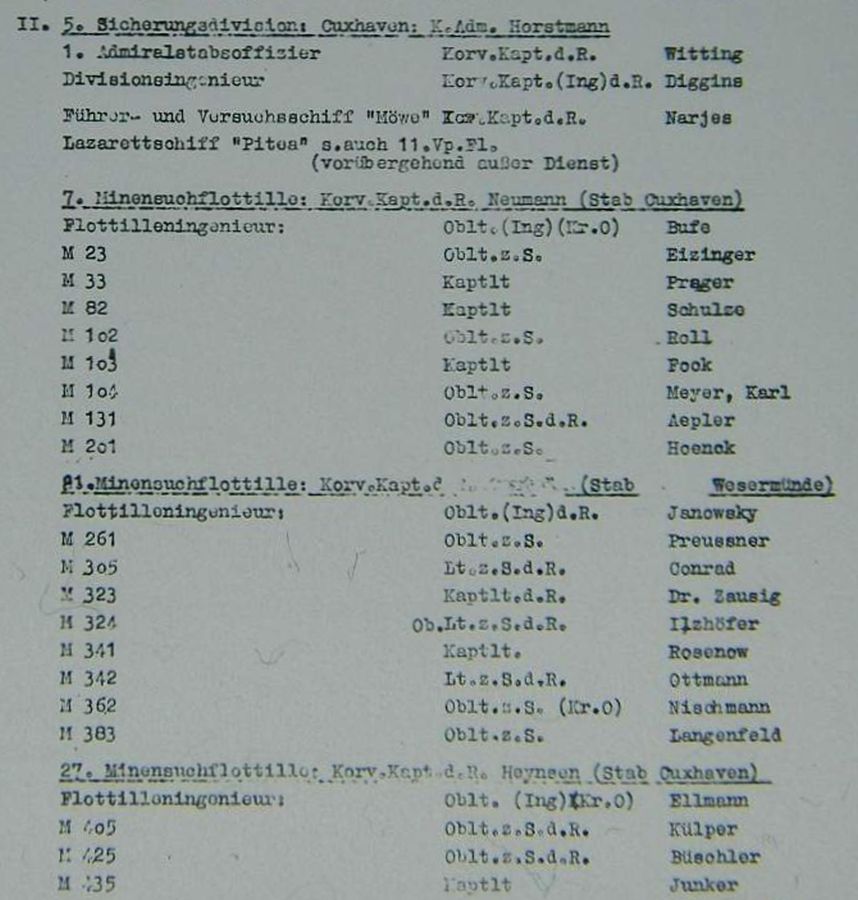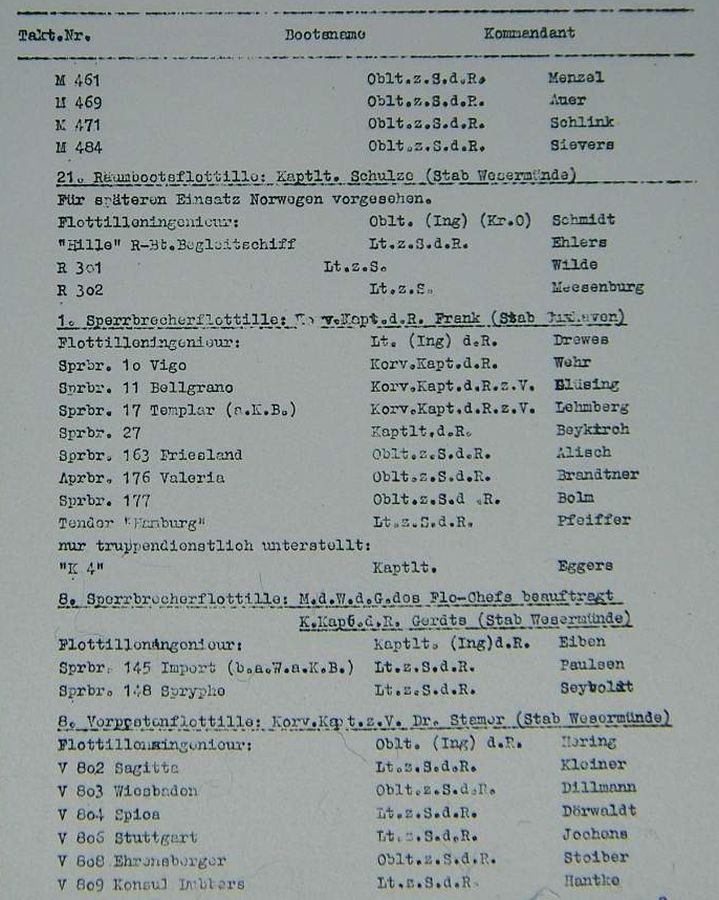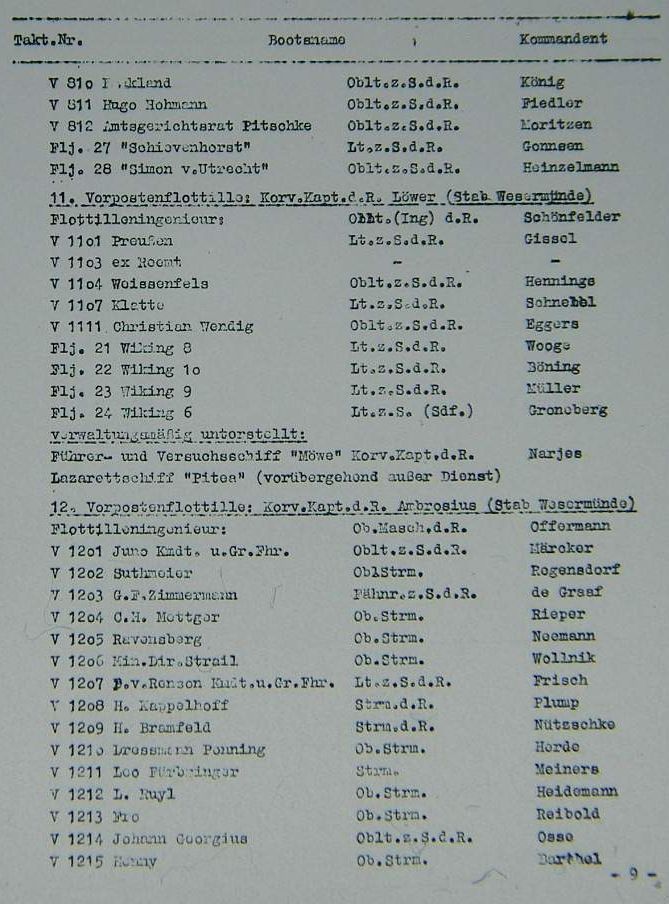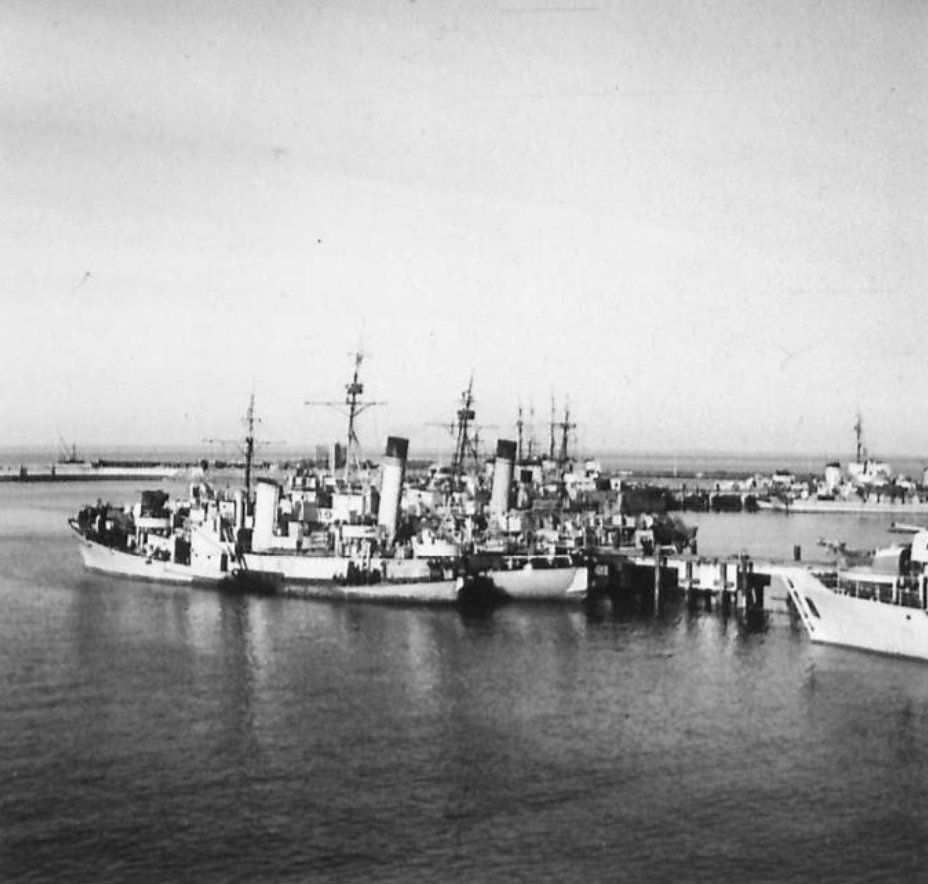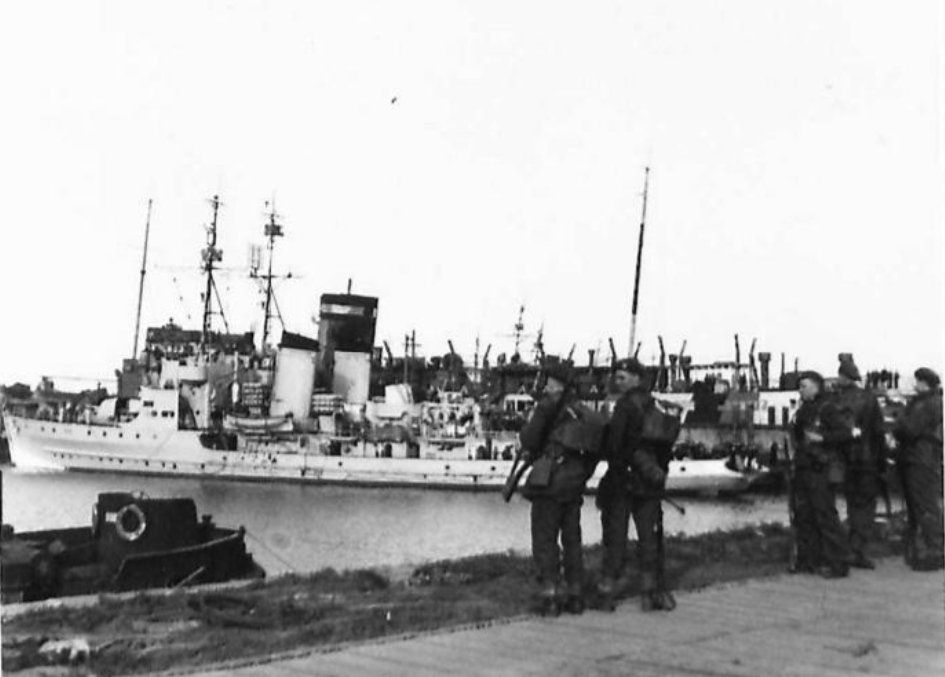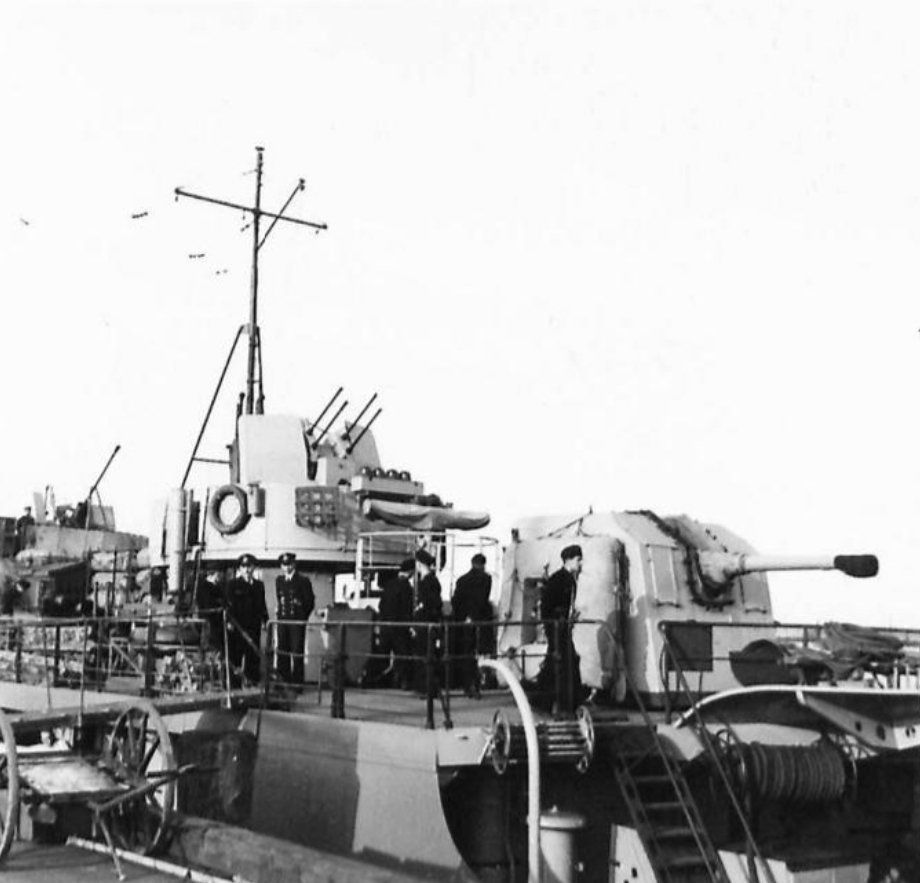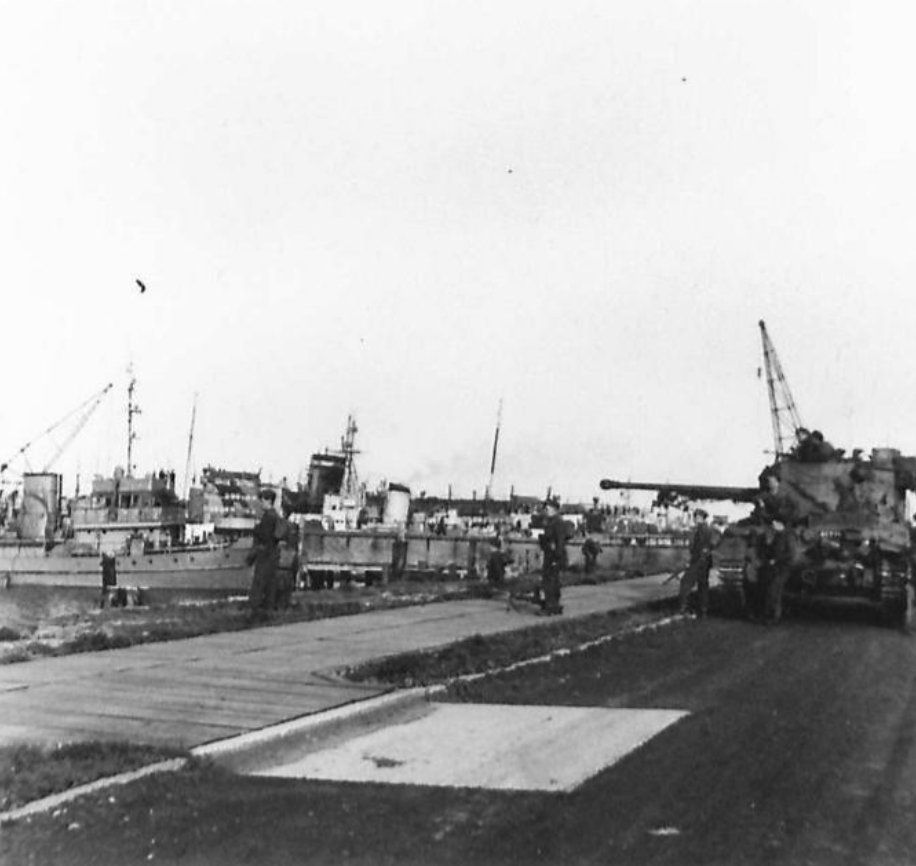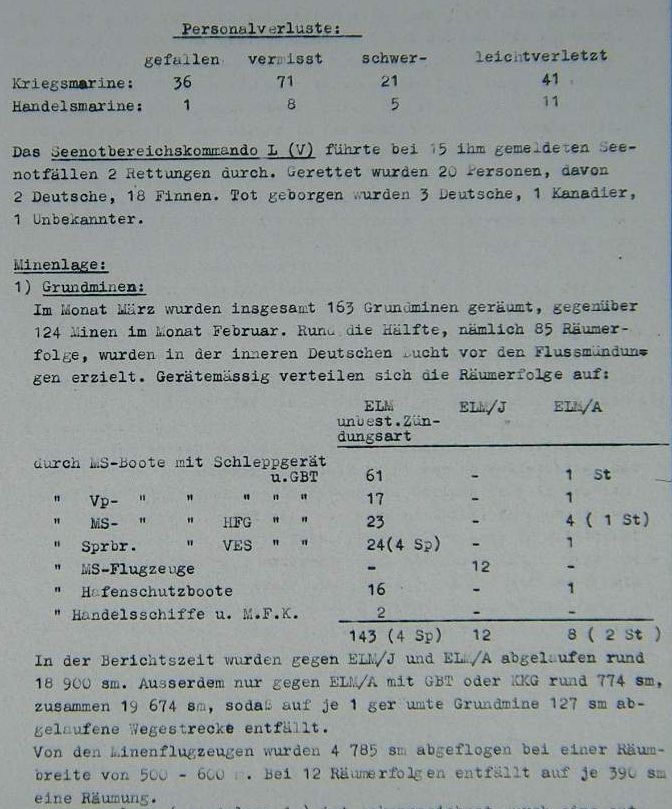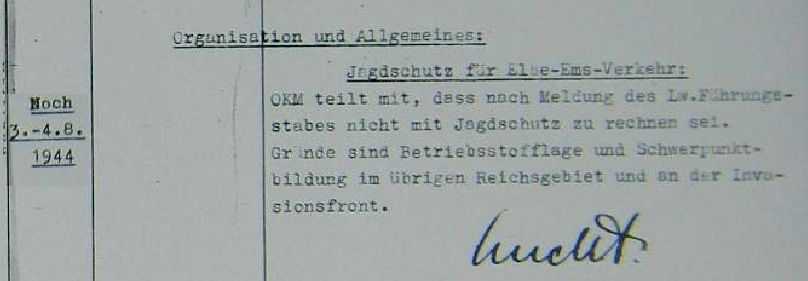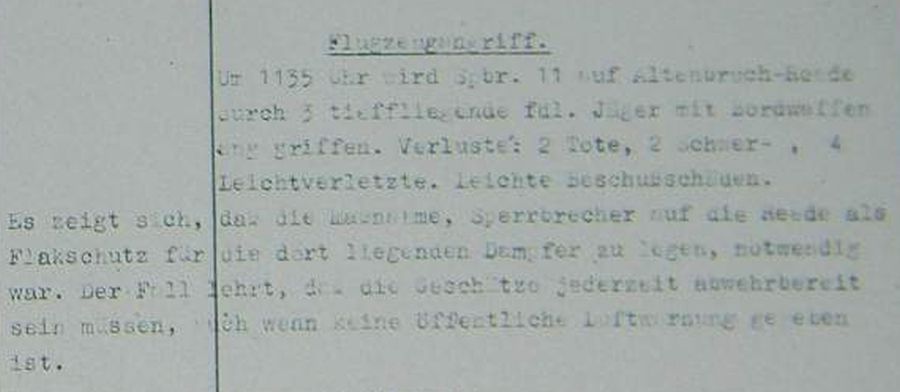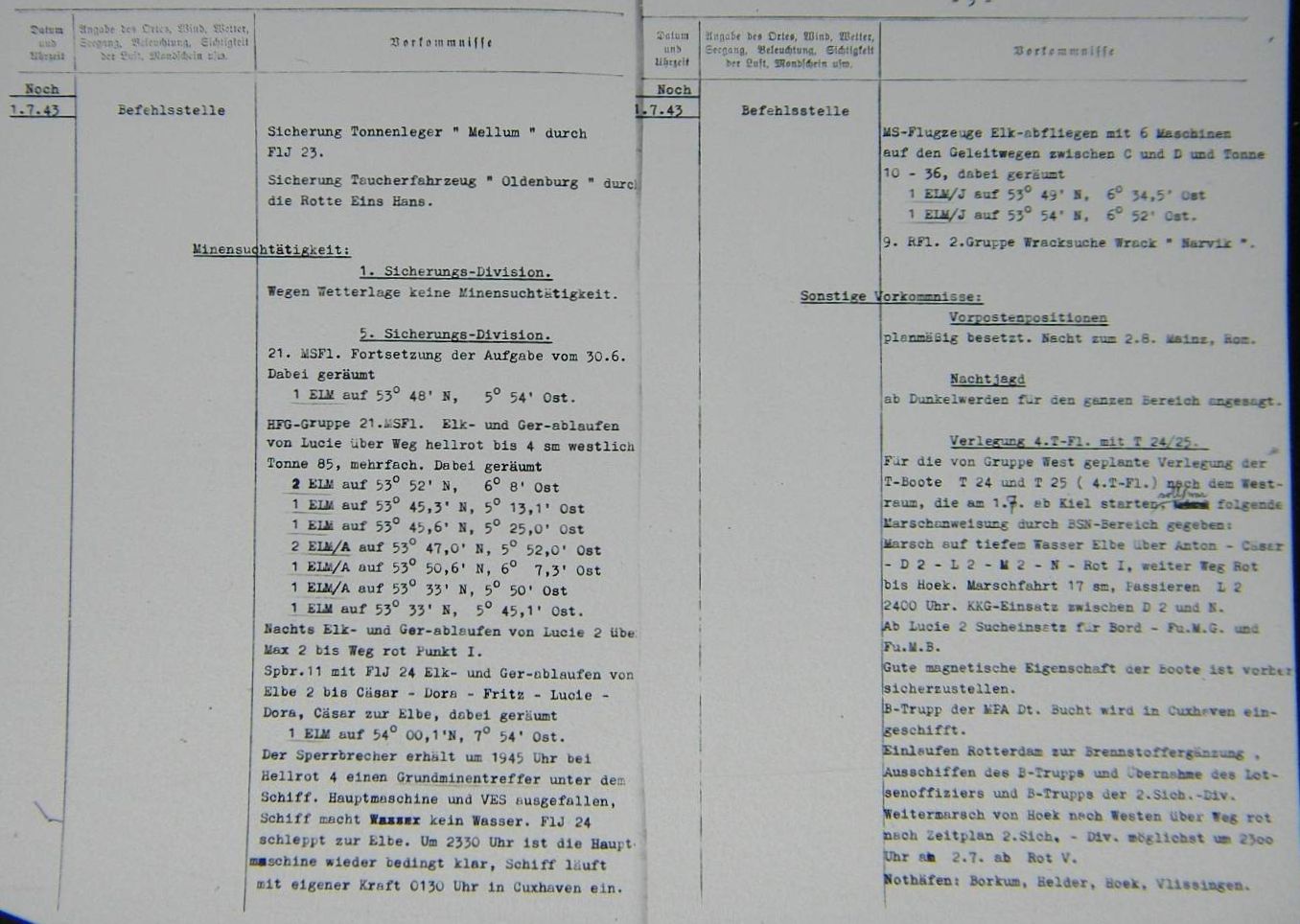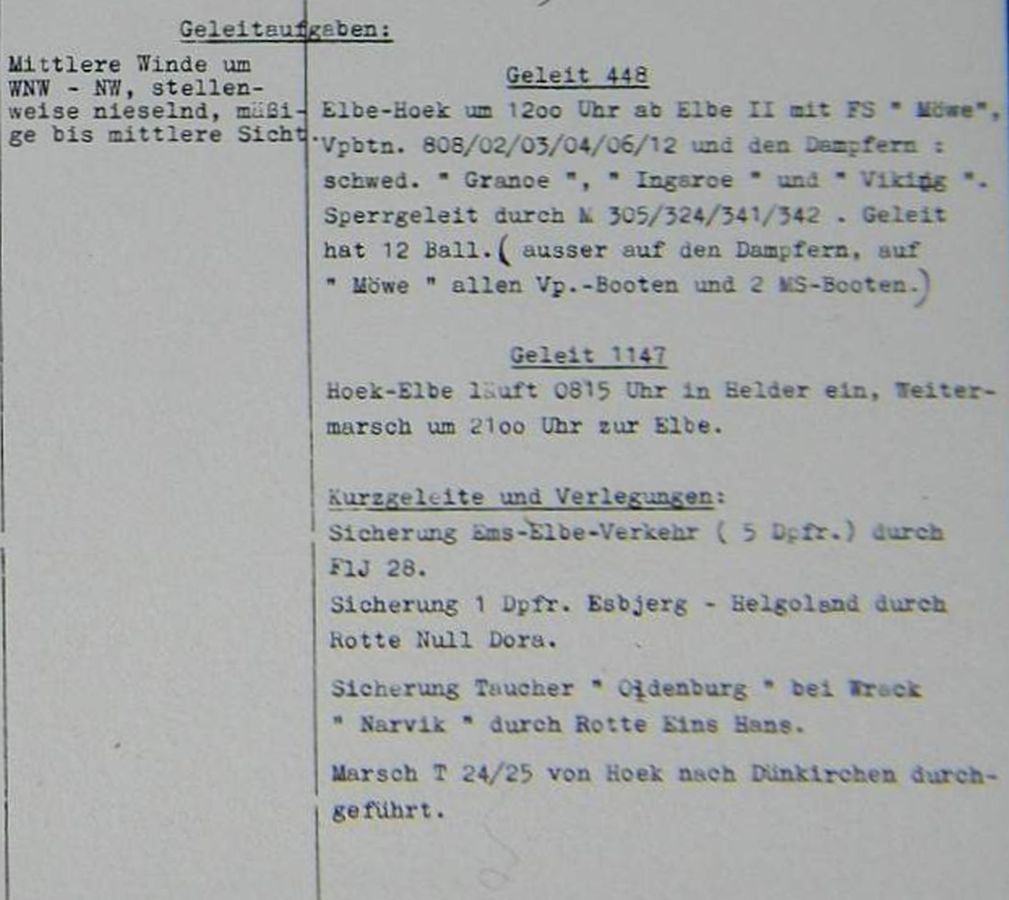
The division was set up on March 12, 1942 for security tasks in the German Bight area and was subordinate to the (BSN) Commander of the Security of the North Sea until January 1945. For this purpose, the minesweepers and other security forces from the Cuxhaven and Wesermünde locations were brought together. The headquarters was in the Prussian Cuxhaven and was the Helgoland barge, which was moored in the Amerikahafen. The unit also ran a naval court martial as a branch of the BSN.
The tasks of the 5th/Security Division in its sector included the clearance of sea mines, as well as the protection of convoys with appropriate ships (mine hunters, anti-aircraft hunters, outpost boats, barrier breakers) from the Cuxhaven and Wesermünde locations.
From January 1945, after the dissolution of the North Sea Security Command, the division was placed under the command of the Admiral Commanding German Bight.
In the meantime, various units of the flotilla changed due to transfers to other departments or changing tasks and also to other locations. However, new ships or vehicles from other departments were regularly added to replace the sunken operational ships. After the capitulation in 1945, the 5th DB Security Division became the 2nd GMSA Mine Clearance Division. It continued to be responsible for clearing the sea areas of the North and Baltic Seas. The unit was disbanded on December 31, 1947.
Source: 5th Security Division – WikipediaSource:5th Security Division 1941-1945 (wlb-stuttgart.de)
Stand 1942:
- 02./ Minensuchflottille
- 17./ Minensuchflottille
- 18./ Minensuchflottille
- 21./ Minensuchflottille
- 05./ Räumbootflottille
- 08./ Vorpostenflottille
- 11./ Vorpostenflottille
- 12./ Vorpostenflottille
- 01./ Sperrbrecherflottille
- 04./ Hafenschutzflottille
- 02./ Flakjägerflottille
- Minenräumschiff 12
- Netzwerkflottille Nordsee
- 2./ Squadron/Mine Sweeping Group 1 (Mausi) in Wesermünde - Weddewarden
Stand 1944/1945:
- 07. Minesweeping Flotilla (Cuxhaven)21. Minesweeping Flotilla (Wesermünde)27. Minesweeping Flotilla (Cuxhaven)13. Mine Sweeping Flotilla (Wesermünde) 01. Breaker Flotilla (Cuxhaven)08. Breaker Flotilla08. Outpost Flotilla (Wesermünde)11. Outpost Flotilla (Wesermünde)12. Outpost Flotilla (Wesermünde)18. Outpost Flotilla04./ Harbor Protection Flotilla (Cuxhaven)Network Flotilla North Sea (Cuxhaven)
- 2. Artillerieträger-Flottille (Ab Anfang 1945)
- 2./ Squadron/Mine Sweeping Group 1 (Mausi) in Wesermünde - Weddewarden
A map from the Admiralty of the German Navy from 1939. It shows the operational area of the 5th/Security Division "German Bight" in Cuxhaven. The secret shipping routes of the convoy routes between Cuxhaven/Wesermünde and the Dutch port cities are clearly visible. Their names, which are mentioned again and again in the war diaries, were simple: Weg Hellrot, Weg Braun and the Friesenweg.
In addition to escorting merchant ships to protect them from Allied attacks from the air and by naval forces, the second task was the removal of sea mines. The British air force had just laid huge quantities in the affected area. For this very dangerous task, the Navy used the ships of the barrier breakers, the outpost boats, anti-aircraft fighters, minesweepers and boats of the harbor protection flotillas. Many of these units themselves fell victim to mine hits or low-level attacks.
Commanders of the 5th Security Division
Reserve Frigate Captain Max Klein (March 1942 to April 1942)
Captain Arnold Bentlage (May 1942 to February 1943)
Rear Admiral Günther Horstmann (March 1943 to September 1944)
Captain Kurt Thoma (October 1944 to May 1945)
Mine clearance activities
One of the primary tasks of the 5th/Security Division-DB was to clear sea mines along the designated routes for convoys. Depending on the direction of traffic, the operational section went from the Elbe to Hoek van Holland (Ndl.) and the Elbe to northern Denmark. The assigned minesweeper and barrier breaker flotillas, the corresponding harbor protection flotillas and the "Mausi" minesweeping group with its aircraft were available for this purpose. On average, between 30 and 140 barrier weapons were rendered harmless every month by the forces of the 5th/SD.-DB alone. However, this repeatedly resulted in losses and damage from close-range detonations to our own ships and aircraft. The British Coastal Command countered all of this with up to 1,000 new mines a month dropped by air or laid by speedboats. In some cases, it was not possible to use the convoy routes for days until they were safely cleared again.
As an example, reports on the situation along the operational sector of the BSN
Even with land protection, there was no 100% protection from enemy low-flying aircraft. Even in the assembly area of the ship convoys in the Altenbruch roadstead, there were occasional sudden attacks from the air. In addition to the anti-aircraft cruisers floating there, the artificial anti-aircraft island Medemsand was built here in 1942 for air defense.




